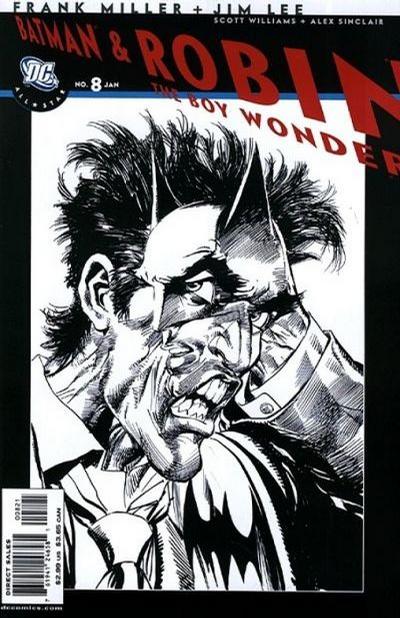We lost a legend this week with the death of Neal Adams. For those of us who are comic book nerds, his vision is etched in our childhoods and out artistic sensibilities. In his incredible career, he modernized Batman and his panoramic covers ignited imaginations around the world.
For artists (and those, like me, fascinated with the process of creation), Neal’s comments around his work is fascinating. With a hat tip to 13thdimension.com, you can find some of them here:
https://13thdimension.com/13-of-my-favorite-covers-by-neal-adams/
But let’s focus on how he came up with one of his masterworks: All-Star Batman and Robin #8
It’s the story about an artist who is presented with
- a problem to solve,
- an amazing talent,
- deep experience, and
- a fearlessness to be able to step out of the box.
Here is Neal in his own words:
“I’ll tell you a story about this one. DC Comics and Warner Brothers wanted me to do a cover for a book that they had not completed, they did not have comic pages for, they did not have the story, or even an outline. Yet the book was being done by Frank Miller and Jim Lee. Talk about pressure. To add to the pressure, they told me that they were going to give this very, very special- covered book to the Warners executives at some kind of function to dazzle them with DC Comics.
So I asked, “Don’t you have anything for me to work from?” to which they answered, “No, not really, but it is Batman and Joker. Just do that thing you do. You know, that thing you do.” and they waved their fingers at me. That thing you do. So I smiled and went away and thought.
I thought I’d like to do a cover that mixes Batman and Joker together into a kind of double image. I realized, of course, no one had ever successfully done this without contriving the picture. That is, if you wanted to do two images over each other, you’d have to do a part of one image that would become a part of the other image. You’d have to move a plant on a table or open a door or do something that would allow the second image to appear. The classic example of this is the woman at the vanity doing her make up and as you move your head, you realize the picture is a skull. If you look at it one way, it’s a woman at the dressing table, look at it another way and it’s a skull. To succeed at this, the artist had to contrive various things to appear in various parts of the composition. So my question was, “How do I do this without contriving the picture, so that people could figure they could guess how I did it?” I didn’t want them to guess.
So I created a new art form. Here, I’ll share it with you. It’s called “Elephants in clouds.”
You know when you lie in the grass in the summertime and look up at the clouds and the other person says, “that looks like a rabbit with a big ass,” and you say, “No, that looks like an elephant with a little ass.” Then you discuss the clouds and what they look like and they begin to look like something else because they move.
The thing is that both of you can see the rabbit or the elephant because it’s sort of there. Of course you have to add your imagination to that, but you can still see it. So the idea is that it’s a picture made of random shapes and your imagination.
You do this when you’re a kid when you see shadows on the wall and they become monsters. They even seem to move, and they scare the bejeezus out of you.
So how could I find a picture of Batman and Joker if I didn’t know what I was looking for. I have a conference room. I put sheets of paper on the table. I have a dozen lights in the ceiling. If I stand a glass on the table, it makes a dozen shadows. I got a ketchup bottle and mustard bottle and glasses with pencils, making all these shadows on the table. These were my clouds.
Then I started moving things around and the shadows changed and I watched the shadows looking for a picture, looking for an elephant…or a Batman and Joker. Six minutes later, I found that picture. It was indistinct, but I could see it. So I took my pencil and I started to draw over the shadows until I could get as much of the picture I could. Then I took the ketchup and glasses away until I got what you see on that cover to something that is not contrived. It’s something I didn’t draw at all. I found it in the shadows on the table.”
Thank you, Neal Adams, for an amazing career.


